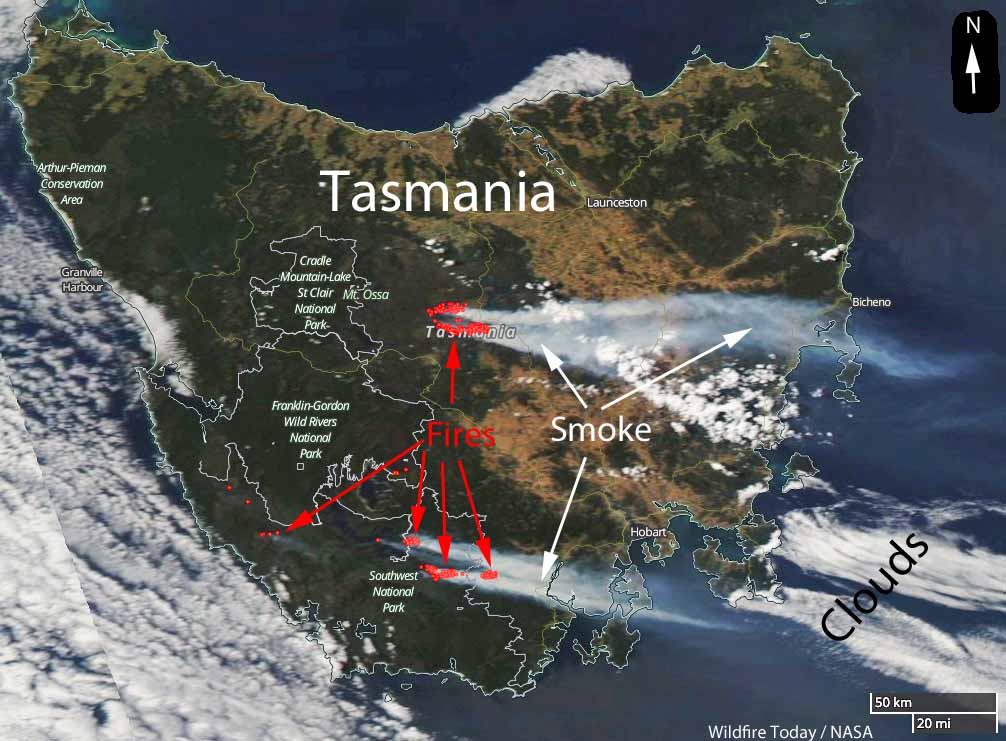
Climate change has already brought alarming change to Tasmania, the huge island south of the Australian mainland. Until recently it was assumed that the climate differences would not be massive since it was thought by some that the ocean surrounding the island would not be heating as quickly as it was in other areas.
Now the southwest area of the state, the heart of its world heritage area, is being described as dying — the rainforest and heathlands are beginning to disappear. The nearby seas, it turns out, are warming at two to three times the global rate.
Richard Flanagan writes about this issue in an opinion article at The Guardian. Below is an excerpt:
…Then there was the startlingly new phenomenon of widespread dry lightning storms. Almost unknown in Tasmania until this century they had increased exponentially since 2000, leading to a greatly increased rate of fire in a rapidly drying south-west. Compounding all this, winds were also growing in duration, further drying the environment and fuelling the fires’ spread and ferocity.
Such a future would see these fires destroy Tasmania’s globally unique rainforests and mesmerizing alpine heathlands. Unlike mainland eucalyptus forest these ecosystems do not regenerate after fire: they would vanish forever. Tasmania’s world heritage area was our Great Barrier Reef, and, like the Great Barrier Reef, it seemed doomed by climate change.
Later [Prof Peter] Davies [an eminent water scientist] took me on a research trip into a remote part of the south-west to show me the deeply upsetting sight of an area that was once peatland and forest and was now, after repeated burning, wet gravel. The news was hard to comprehend – the enemies of Tasmania’s wild lands had always had local addresses: the Hydro Electricity Commission, Gunns, various tourism ventures. They could be named and they could be fought, and, in some cases, beaten.
Six weeks ago, the future that Davies and others had been predicting arrived in Tasmania. Lightning strikes ignited what would become known as the Gell River fire in the island’s south-west. In later weeks more lightning strikes led to more fires, every major one of which is still burning.
